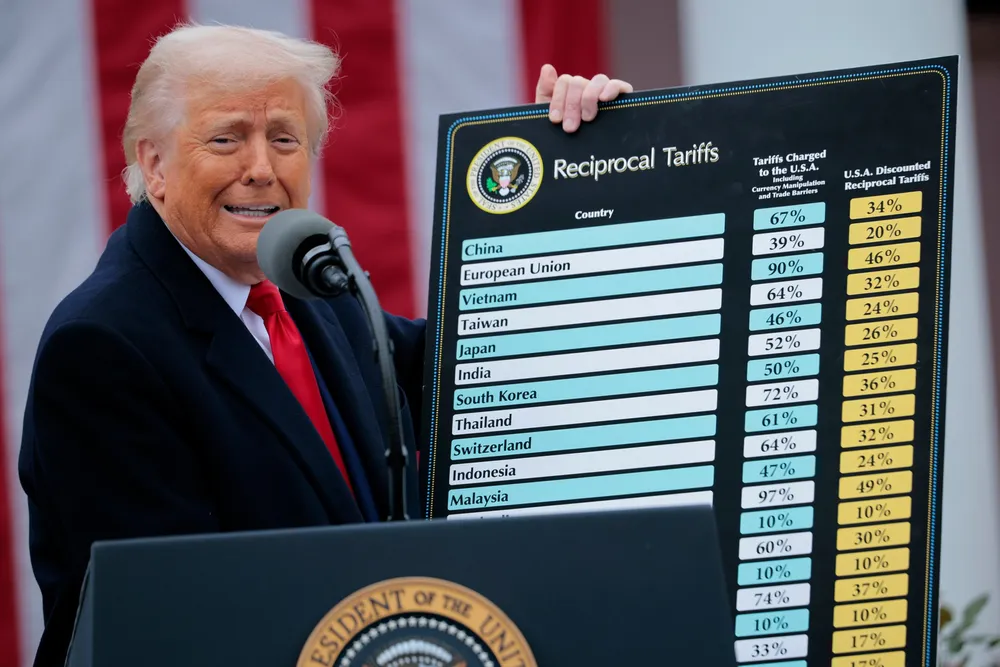China escalation new challenge for clean energy as Trump pauses most tariffs
Despite gains, renewables' shares remain under pressure amid President's capricious policymaking and hostility towards sector

US clean energy stocks soared on Wednesday after President Donald Trump abruptly announced a 90-day pause on most of his "reciprocal" tariffs that took effect 13 hours earlier, braking to some extent the sector's downward spiral since he took office in January.
Ironically, given his antipathy toward the sector, wind-related stocks were the biggest gainers.
TPI Composites, the leading independent onshore turbine blade maker, skyrocketed 20%; turbine OEM GE Vernova soared 14%, and tower manufacturer Arcosa rose 10.7%.
Also posting solid gains were NextEra Energy, the largest renewables player outside China, up 5.4%, and AES, a leading independent wind and solar power producer, up 8.8%. First Solar, the largest US module producer, posted a 7.7% gain.
Even with today’s advances, all those stocks except GE Vernova have lost value in the past month with investors spooked by Trump’s erratic trade and foreign policies, hostility toward clean energy and 2022 Inflation Reduction Act, and blizzard of executive orders that have created widespread uncertainty for investors.
While his move today was welcome relief for wind, solar, battery storge developers, their equipment suppliers and corporate and utility energy buyers, there was little confidence that the Trump tariff roller coaster ride was over.
Despite the administration's assertion that 75 nations with Japan in the forefront had come forward wanting to cut trade deals to avoid his reciprocal tariffs, which Trump cited as a reason to pause them, there is no guarantee he would accept the concessions they propose.
If not, such a scenario could set the stage for even higher tariffs than the 11% to 50% rates he walked back for nearly 100 countries now subject to a 10% baseline global levy.
Trump also escalated his trade war with China, a major supplier of battery storage components and materials, as well as critical minerals used across multiple US sectors that support clean energy manufacturing. China has the largest bilateral trade surplus with the US.
After slapping a 34% tariff on Chinese goods on top of levies imposed by the prior three US administrations, he then raised the total US levy to 104% earlier this week. China responded by raising its tariffs to 84%. Trump today increased his levies to an eye-watering 125%, "effective immediately."
The speed at which he has ramped US tariffs on goods from China has left senior executives shaken in multiple industries including clean energy, an apparent effort to accelerate decoupling of the world's two largest economies.
While many wind and solar project developers anticipated Trump would seek to wring trade concessions from China and have sought alternative equipment and materials sourcing, if available and price competitive, the high tariffs will be inflationary and raise their costs.
To what extent will depend on how long tariffs remain high, analysts said. Trump claimed that Chinese leaders were determining how best to approach his administration on trade. “China wants to make a deal,” he said.
Canada and Mexico are exempt, for now, from the 10% baseline global tariff, but could face a 25% levy on all goods that Trump has threatened to impose for their alleged failure to slow illegal immigration and cartel-related flow of the opioid fentanyl into the US.
The US and Canada are both taxing automobile and truck imports from the other at a 25% rate. There are also US tariffs on Canadian aluminum and steel.
Items such as electrical equipment and various other goods compliant with the North America trade agreement are exempt from the tariffs.
(Copyright)